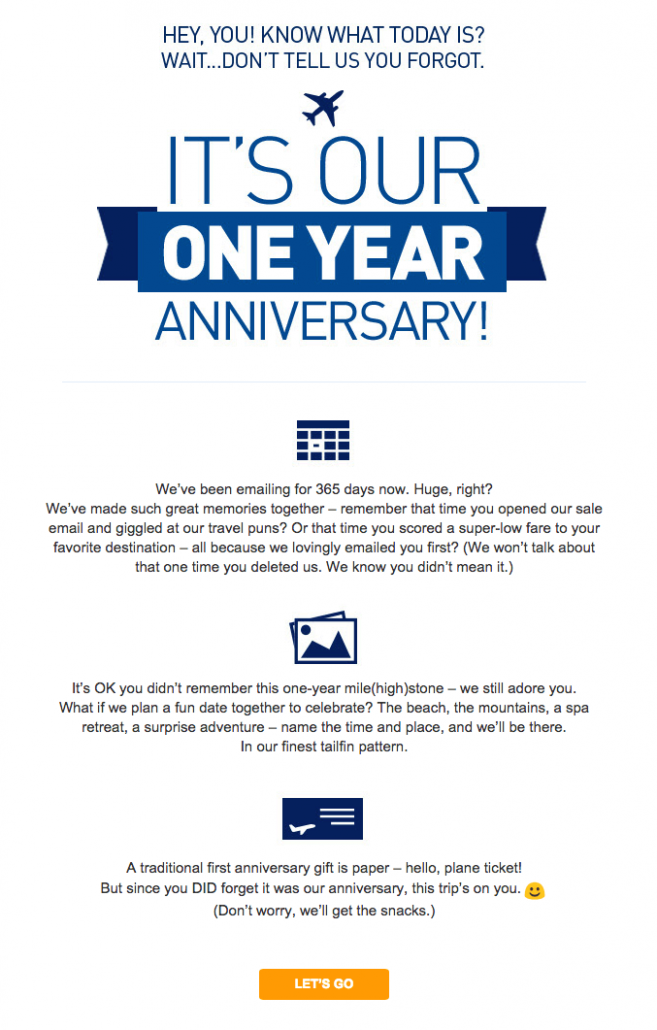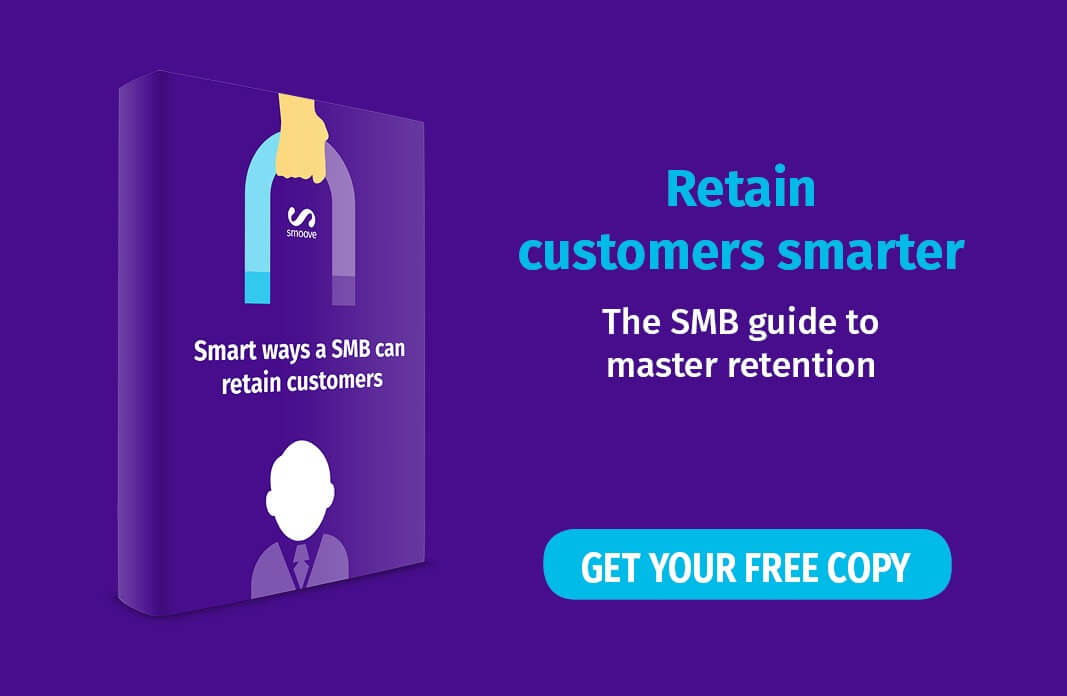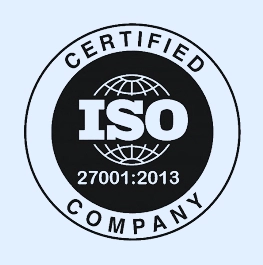Some businesses have their sights locked on new customer acquisition so hard, that they overlook the customers they already have. Experienced marketers often highlight that this is one the most common mistakes businesses do nowadays.
According to research, 32% percent of your first-time customers will buy from you again. But that’s not the end of the cycle. The same research showed that second time customers are 53% more likely to place a third order, and by the time they’ve ordered something for the tenth time, they’re 83% more likely to buy again.
Even though these stats are quite impressive, this process does not happen automatically. Businesses need to find ways to encourage their first time customers to buy again (and again). In order to do that, they have developed some proven strategies for the mentioned conversion.
Here are some unique approaches with the real examples from successful companies out there:
1. Loyalty programs
Everyone loves rewards for being a regular customer and loyalty programs are proven as a great customer retention tactic. They are one of the most successful marketing tools for turning your one-time buyers to a loyal customer, especially due to the fact they can be designed and executed in many creative ways. These can be done through:
- The point system, based on receiving points for every purchase customers make
- The tier system, which is usually employed by travel industries where the customer, for example, receives more free miles the more he or she flies with a certain company
- The value based system of giving a certain percentage from their purchase to charity.
So if, for example, the company is a chain of pet food stores, the company can choose to donate a % of a customers purchase amount to an animal rescue shelter.
You can even design a game which will entertain your customers on their search for a reward. This could be a scavenger hunt during an event in your store or a social media app, it’s up to you!
Some companies also offer incentives to obtain customer cooperation by paying customers for referrals. Hospitality service giant AirBnB made a big success in retaining their customers by providing them with a $25 discount on their next booking for every successful friend referral. Moreover, they expanded their reward system to $75 if the friend decides not only to book accommodation via AirBnB, but also to rent out its place on the website.
Implementing loyalty initiatives doesn’t always mean you need to have a large scale, points-based loyalty program. It could, for starters, be a simple frequent-shopper incentive. Many businesses, especially in the beverage and food industry, use so-called punch cards to track and reward customer loyalty. The more purchases customers make, the more gifts they get. If you’re, for example, running a coffee chain, you can hand out punch cards with offers such as free coffee on their tenth purchase across your stores.
A good example of converting one-time buyers to loyal customers was employed by IKEA. The swedish furniture retailer sent out a newsletter with an invitation to their special event “Cook and Eat Your Way” which featured free coffee and food, giveaways, kids’ activities, special discounts and more. The event was free and open to everyone, but with more benefits for members of their loyalty program, “IKEA Family” and those who decided to join it. This way the company pointed out that they have something for all of their customers, but even more to those who stay loyal. Also, with this example IKEA showed that newsletters can be used to accomplish different goals such as both promoting an event and the loyalty program, acquire new customers and retain those who already made a purchase.

2. Personalized newsletters
One of the best ways to reach out to your customers is via a professionally tailored and timely newsletter. Newsletters are a very effective and cheap marketing tool to offer more products or services to your current customers, but also to go beyond that. By including different content in your newsletter such as exclusive offers (discount coupons, contests and events), updates about your business or products and educational ‘How to’ and ‘Did you know’ articles, you can keep your customers permanently interested in your business and build your brand.
To personalize the newsletter according to the needs of different customer groups, remember to always create multiple email lists for multiple types of customers you may have out there. Along with doing this, don’t forget to identify your goals and think about why and how to personalize the content according to those.
For example, if you own a chain of bicycle stores and have contact info provided by your one-time customers, you can use the newsletter to inform them about new models of the bicycle they purchased, or offer them a special discount on your best-selling bicycle helmet. You can even include a link to a YouTube video that shows the performances of that new mountain bike you have in your store or an article about the benefits of cycling. Think of your customers, but also don’t be afraid to be creative with your newsletter content.
Amazon does a great job with approaching their one-time customers via personalized newsletters that include recommendations for their next purchase.

Besides personalized offers and insights into business operations, newsletters can be used to entice customers into providing feedback. Two-way communication is a great way to improve service and retain customers, so ask them for feedback on a service or product they purchased. This is how you show the customer that you value their opinion and are ready to adjust your offers in order to provide the best customer experience.
3. Offer ways for customers to express their opinion
“Accessibility will continue to play an important role in email marketing going forward, though marketers need to embrace accessibility across all channels, not just email.” – Paul Airy, Email Design and Development Manager at Skipton Building Society.
Opening different channels of communication for your customers will make your business more transparent and show your customers that you are always there for them.
You should open social media accounts, set up a clearly visible “Contact us” page or, for example, conduct a survey through which customers can express their opinion about your products and company.
Customer service chatbots are also increasing in popularity. This technology makes it easier for businesses to engage the customers, to cut down on the workload and to resolve possible customer service issues from the very start.
Chatbots can significantly improve customer care efficiency and enlarge your online availability. Customers expect the 24/7 accessibility on social channels, so businesses have turned to automation to meet this demand. Still, to save money and time on customer care, chatbots need to be approached strategically. This can be done through finding a balance between technology and the personal touch. A good example of this was provided by cosmetics company Sephora that employed this approach via Facebook Messenger bot.

Try to find new ways to encourage your one-time customers to interact with your business. For instance, along with asking for a product review, you can ask for referrals or invite them to participate in a social media contest or an event you’re planning. In short, make sure you’re on their radar when they are ready to make another purchase. Discuss the products and services and don’t hesitate to offer some advice to your customers if they ask for it, just like The Body Shop does!

You can also engage your customers by replying on the random comments they make about your business on social media. Food giant Tesco used this tactic to connect more with their customers on Twitter and people loved it! The way that Tesco is handling the communication with their buyers on Twitter became one of the best examples on how to retain the customer and make them feel important.

By replying on the comments in a personal and friendly manner, Tesco showed that they are actually paying attention to their customers and want to engage in a conversation with them.
Tesco also replies to their customers in a timely manner, which makes the way company interacts with customers even more appreciated.

4. Act on the feedback
Don’t provide communication options just for the sake of it and instead use it to actually talk with your customers. By responding to customer’s feedback and requests, businesses show that they are listening to them and value their opinion.
Pay attention to your tone and language and don’t forget to express your gratitude when replying to customers. Make your responses personal as you don’t want to make them feel like their questions triggered an automated reply.
Same goes for the complaints and negative comments you receive. When customers see a complaint go unanswered, it looks like you are avoiding or ignoring them. This can do serious harm to your business, so even if the feedback you received on social media was negative, be there for your customers and don’t hesitate to answer on their public posts. Use the magical ‘Thank you for your feedback’, leave your contact info such as email address or phone number and kindly ask your unsatisfied customer to reach you directly so you can later resolve the issue in a one-to-one communication with them.
Turning negative customer experience into positive one starts with you responding timely and offering to resolve the issue they may have with your business, services or products they purchased, such as shown in the next example.

By being professional, polite and open to conversation, you’re showing the customers you care and that you are willing to do as much as you can to set things right.
5. After sales experience
In small and medium businesses every customer counts, so the after sale care is as important as any other point on this list. Well-designed and timely after sales service will make the customer more likely to order again but also to share the positive experience.
This basically means that you can use your current customers to get new customers by spreading the good word about your business. Therefore, it serves as a great tool for building a community.
After sales care is much more than a simple ‘Thank you’, and can be acquired via different tactics. Along with offering a warranty and/or sending a surprise gift with their purchase, you can ask your customers for product reviews, give helpful tips on using the products and/or give them vouchers and gifts towards a new purchase.
Businesses also often use public holidays for rekindling the customer loyalty by reminding them about promotions and sales they may have. One of the best ideas employed by successful companies is to reach out to the customers on a special event by sending them a card paired with a coupon. Personal cards and a discount can very easily lead to the next purchase, and that is exactly what every business owner wants. You can, for example, be creative as the airline company JetBlue which uses their customer account creation date to trigger a personalized email to celebrate their first “anniversary”!

One of the best and most creative ways for providing good after sales experience is unique and delightful packaging. A very good example of a well-done after sales care is that one done by Norwegian bottled water company Voss which sells water in round glass bottles which are not only beautifully designed – they’re reusable too.
Design of the bottle resembles those we use for sports activities and they’re made of transparent glass. What makes the Voss packaging so great is it encourages people to reuse the bottles to make all kinds of DIY refreshing drinks after they finished the Voss drink, which we is then posted on social media. And that’s not all. People even use the Voss bottles to make art installations and home decorations.

Image Credit:
http://www.tameramowry.com/
http://tiphero.com/
http://violetpaperwings.blogspot.ba/
Wrap-up
One-time buyers are great for business but in order for your business to live and grow, you will need regular, loyal customers. The good news is, every loyal customer begins as a one-time buyer. To make this conversion and increase their sales without investing a lot of money, the best businesses use several different strategies.
Most successful tactics to accomplish this require creativity and innovation to the approaches businesses employ to convert their one-time buyers into loyal customers. While combining the perks technology offers nowadays with a research on your customers, you should always add some personal touch in everything you do. Think about how can you can engage the customers on social media and which incentives to offer after their purchase. Respond timely to their feedback and don’t hesitate on saying sorry if they’re unsatisfied. Also, discuss your products on social media and publicly offer your help with any issue they may have.
Next time you set up, create or send out a personalised messaging to your customers think about all how you can improve this further with examples above to show your customers you’re still there in a creative and timely manner to turn more of your first time buyers into customers!



